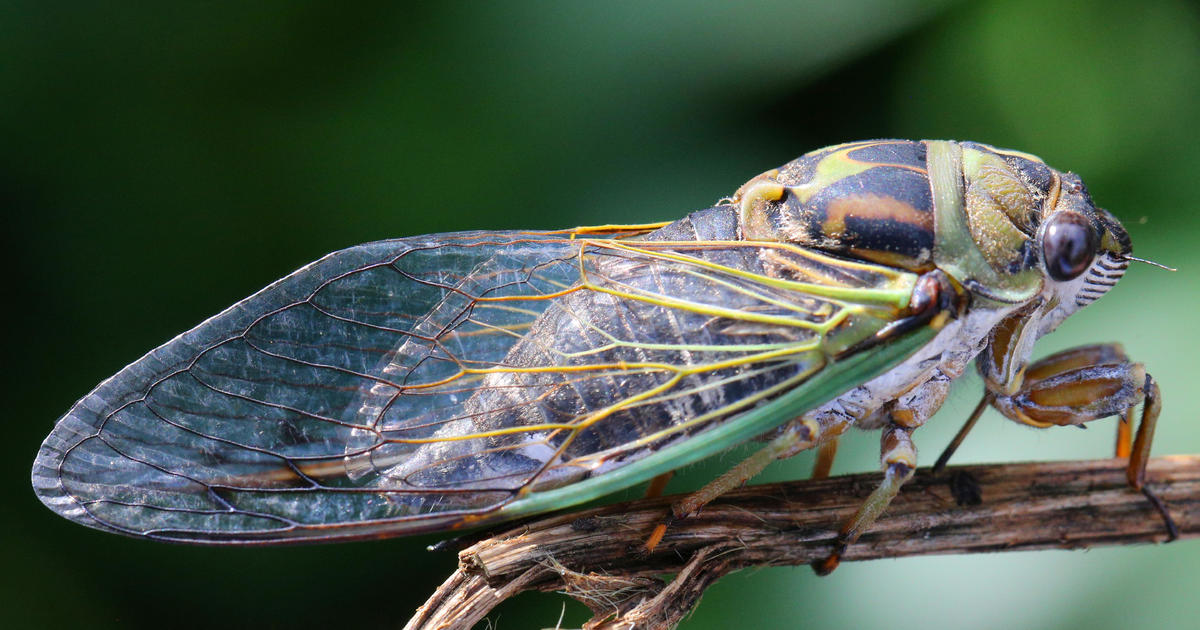The “Cicadageddon” insect outbreak will be the largest bug emergence for centuries
[ad_1]
Red-eyed, trillions of bizarro evolution’s wonders periodical cicadas Those with jet-like muscles at their rears and pumps in their heads are about to be blown away. Emerge in Numbers Not seen for decades and possibly centuries
The periodical cicadas, crawling out of the earth every 13 or 17 year, are the kings and queens of nature’s calendar. Their collective song is as loud as jet engine engines.
These black bugs with bulging pupils are different from the greener-tinted cousins which emerge annually. They are buried and remain there for many years until they come out and cover the landscape.
The University of Connecticut has predicted that a rare cicada double-dose is about to invade two parts of the United States this spring. cicada expert John Cooley called “cicada-geddon.” Thomas Jefferson wrote about cicadas and the last time they appeared together was in 1803. His Garden Book President Bush called them locusts by mistake.
“Periodic cicadas don’t do subtle,” Cooley said.
Creative Touch Imaging Ltd./NurPhoto by Getty Images
If you’re excited about the upcoming solar eclipseSaad Bhamla, biophysicist at Georgia Tech, said that the cicadas were bigger and weirder.
Bhamla said: “We’ve got billions of these incredible living organisms coming out of the Earth. They climb up trees and it’s an amazing experience, a sight that’s to behold.” “It is like an entire alien race living under our feet. Then, some prime number year they come to say hi.”
Periodical cicadas can be mistaken for locusts that are not related and are voracious. However, they do not cause economic damage. They can harm young trees and some fruits crops, but this is not widespread and it can be prevented.
Two broods equals a “mass infestation”: 1,000,000 per acre
The largest geographic brood in the nation — Brood XIX and coming out every 13 years — is about to march through the Southeast, having already created countless boreholes in the red Georgia clay. It’s a sure indication of the cicada invasion. Entomologists have said that the emergence of cicadas is a result of climate change. The bugs are initially brown but become darker as they mature.
Cicada cousins, which appear every 17 years, will soon follow the insect in Georgia and the rest the Southeast. inundate Illinois. They are Brood XIII.
Mike Raupp, entomologist at the University of Maryland, said, “You have a very large brood, Brood XIX. But you also have a dense and historically abundant brood, Brood XIII, in the Midwest.”
“And when you put those two together… you would have more than anywhere else any other time,” University of Maryland entomologist Paula Shrewsbury said.
These hideaway-cicadas only occur in the eastern United States. There are 15 broods which come out on 17 and 13 year cycles. These two broods may actually overlap — but probably not interbreed — in a small area near central Illinois, entomologists said.
Experts have told CBS Chicago that there is likely to be Illinois has no way to avoid insects When they emerge, it is likely to be in mid-May.
Allen Lawrence, curator of entomology and associate curator at the National Museum, said, “It is going to be a peaceful invasion.” Peggy Notebaert Museum of Nature
The numbers that will come out this year — averaging around 1 million per acre over hundreds of millions of acres across 16 states — are mind-boggling. Cooley estimated that there are hundreds of trillions or even quadrillions.
Cooley, who said that “the cicada palooza” will be even more spectacular when the two biggest broods of XIX, and XIV, emerge together in 2076.
Cooley, along with several other entomologists, said that the origin of some of those astronomical cicada counts can be traced back to evolution. Raupp, an avid bird-eater, said that periodical cicadas are fat, slow, and tasty. (His school put up a cicada cookbook called “Cicada-Licious.” He said: “There are too many to eat them all to extinction.”
“Birds will feast everywhere.” Raupp said that the cicadas would once again triumph and their bellies would be full.
They can also make a snack out of cicadas. CBS Chicago: Veterinarians tell CBS Chicago It’s not generally a health hazard.
“They are safe for pets.” Dr. Cynthia Gonzalez, of Family Pet Animal Hospital located in Chicago’s Lincoln Park district, said that they won’t sting your pet or bite it. “The only issue that would present for your pet is if they were to ingest a large amount of them, or if they’re a smaller dog if they ate a small piece of the exoskeleton — sometimes that can really irritate their GI tract.”
“Sometimes, in rare instances, an animal may have an allergic reaction to some of the components in that exoskeleton if that pet is also allergic to shellfish,” said Dr. Kelly Cairns DVM, MS, DACVIM — a board-certified small animal internal medicine specialist, vice president of medical excellence and education for Thrive Pet Healthcare, and secretary of the board of directors of the Chicago Veterinary Medical Association.
Prime numbers as an evolutionary trick
In their cycles, cicadas also use math or numbers. They either stay underground for 13 or 17 years – both prime numbers. These big and odd numbers may be an evolutionary trick used to prevent predators from relying upon a predictable emergence.
Shrewsbury stated that the cicadas’ mating and nesting can cause problems to young trees and nurseries, as it can weigh down and break branches.
The Mount St. Joseph University biologist Gene Kritsky is a cicada specialist who wrote. A book on the dual emergence of this year. He called American suburbia a “periodic cicada Heaven”.
When all those cicadas start singing in those trees, it can be very loud. It’s a bit like a singles club, with the males singing in order to attract mates. Each species has its own mating song.
“The whole tree screams,” said Kritsky who created a Cicada Safari app Tracking the cicadas is a great way to find out where they are.
Cooley uses hearing protection to protect his ears from the intense noise.
Cooley stated that the noise level was “up to 110 decibels”. “It would be like placing your head right next to a plane.” It’s painful.”
The courtship was a sight to behold. Kritsky imitated a male singing, “ffaairro” (his pitch rising), “ffaairro.”
Kritsky, in a play by-play, narrated: “She flicks out her wings.” “He moves nearer. He sings. She flicks her wing. When he is really close, the gap disappears and he will say “ffaairro” – ffaairro – ffaairro – fffaairro.
The female then lays eggs in the groove of a branch. The The cicada nymph falls to the groundDig underground to reach the roots of the tree.
Cicadas are unique in that they feed off the tree’s xylem which carries water and nutrients. The pressure inside xylem of trees is lower than that outside. However, a cicada has a pump built into its head which allows it to extract fluid from the tree.
The cicada is so hydrated that it has to eliminate a lot of liquid waste. Georgia Tech’s Bhamla said that it does this thanks to a muscle that produces a jet of uric acid that flows faster than any other animal.
T.J. Rauls in Macon Georgia was digging to plant holly and roses when he found a cicada. A neighbor had posted an image of a critter that was just emerging.
Rauls called his own bug “Bobby”, and said that he is looking forward to seeing more.
Rauls stated, “I believe it will be exciting.” “It’ll be confusing with their noises.”
[ad_2]




